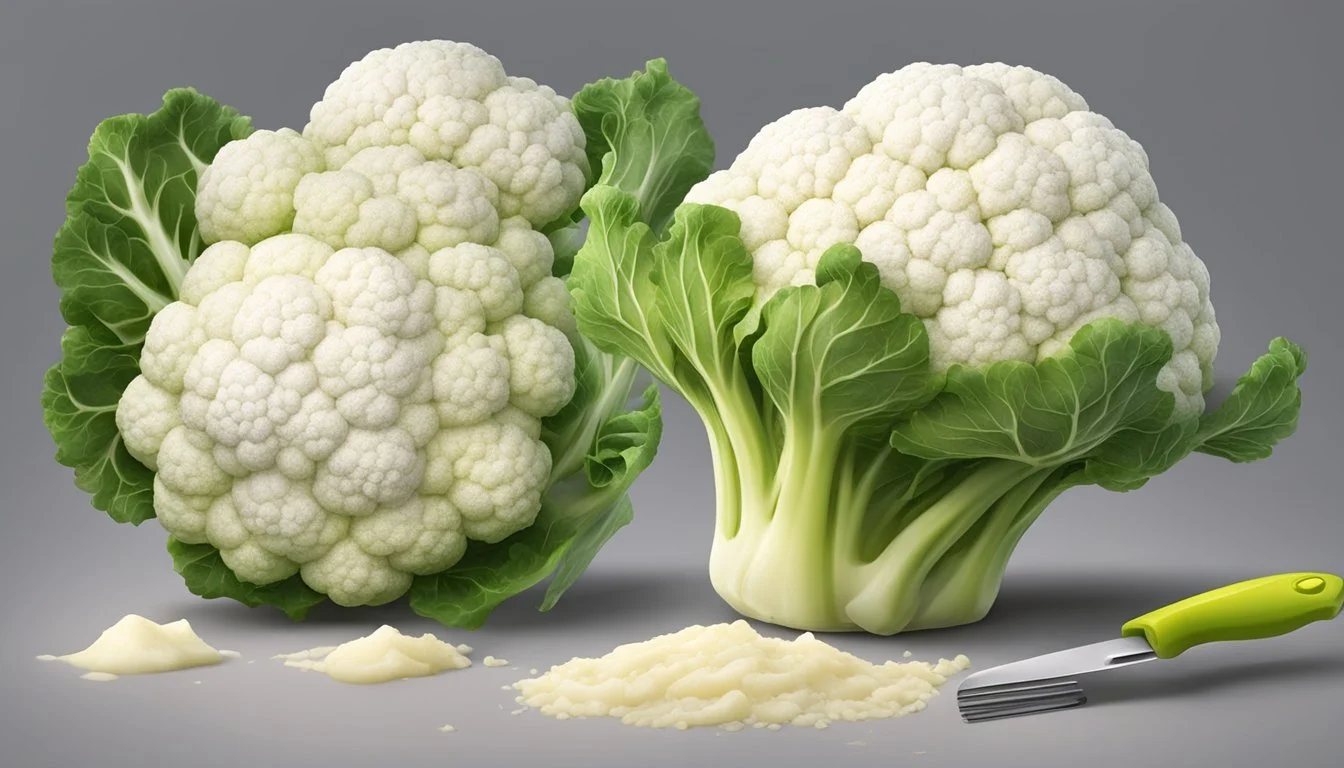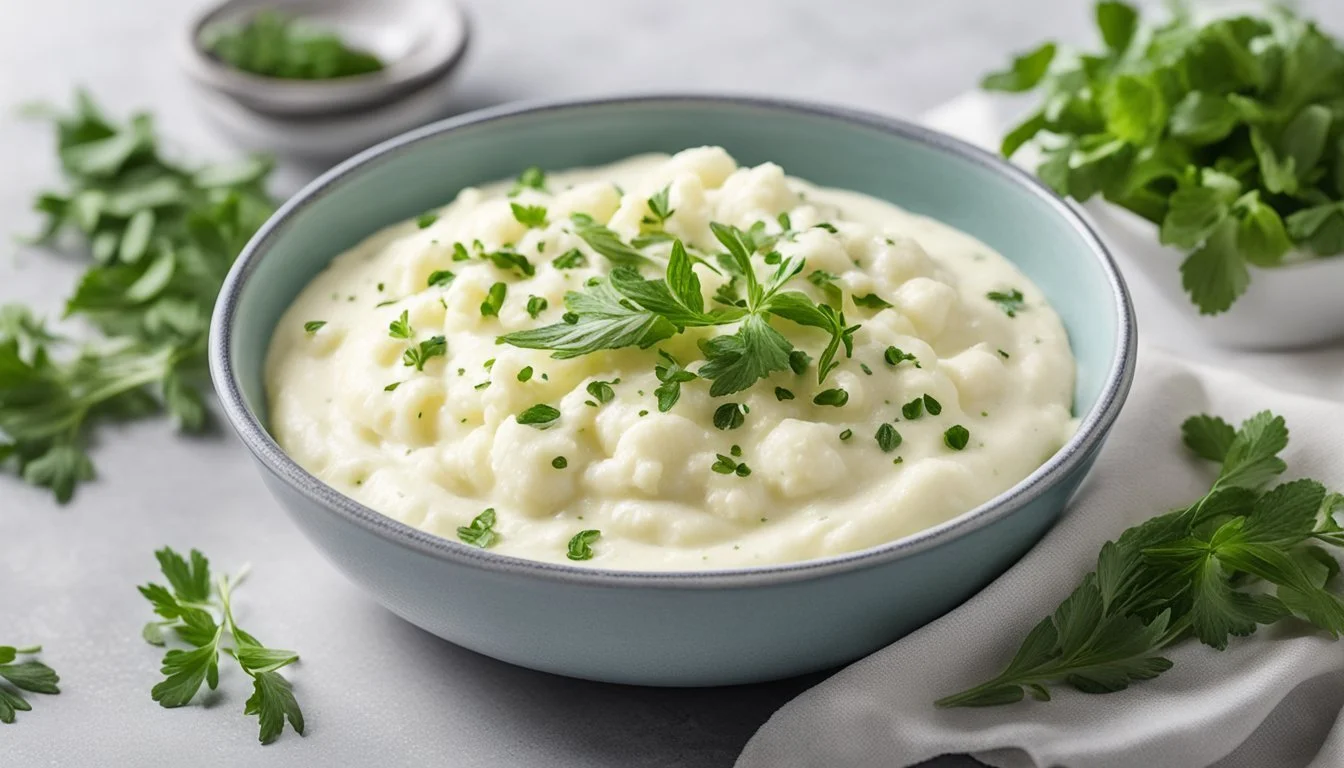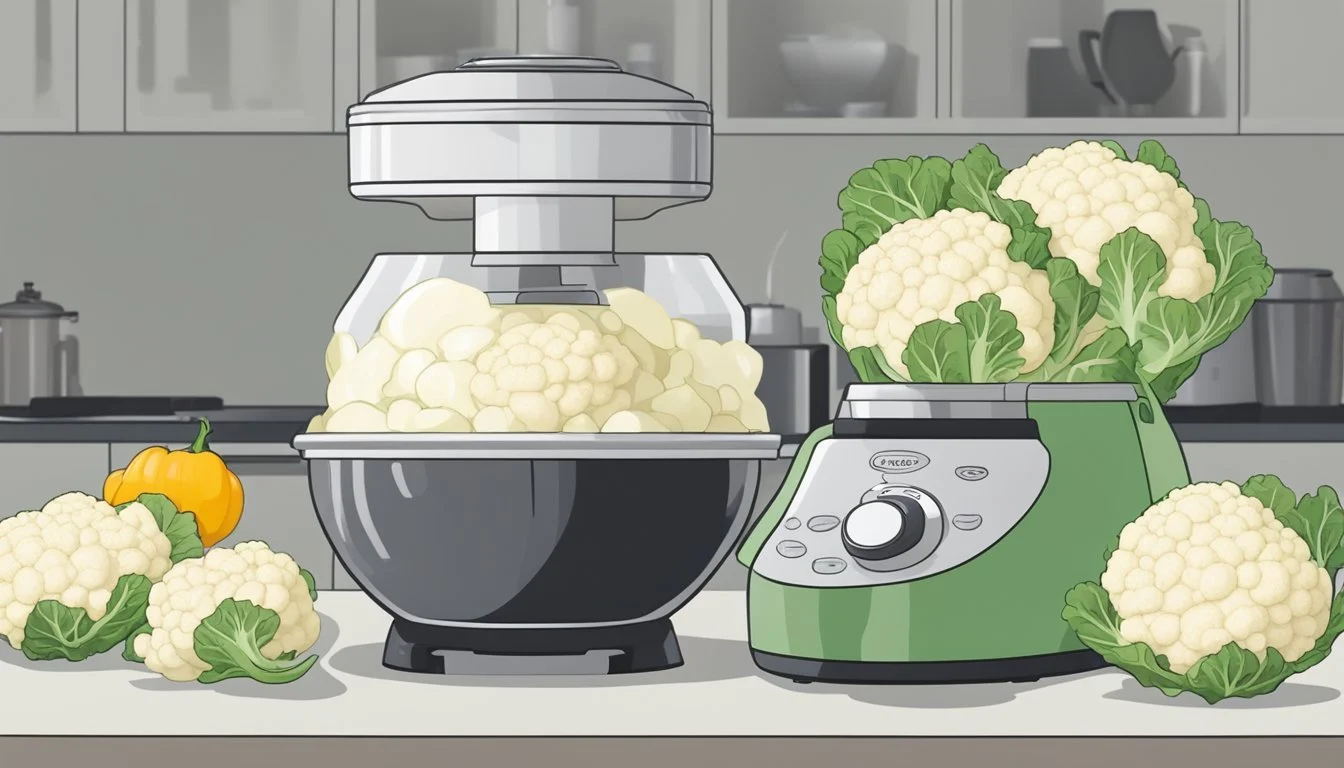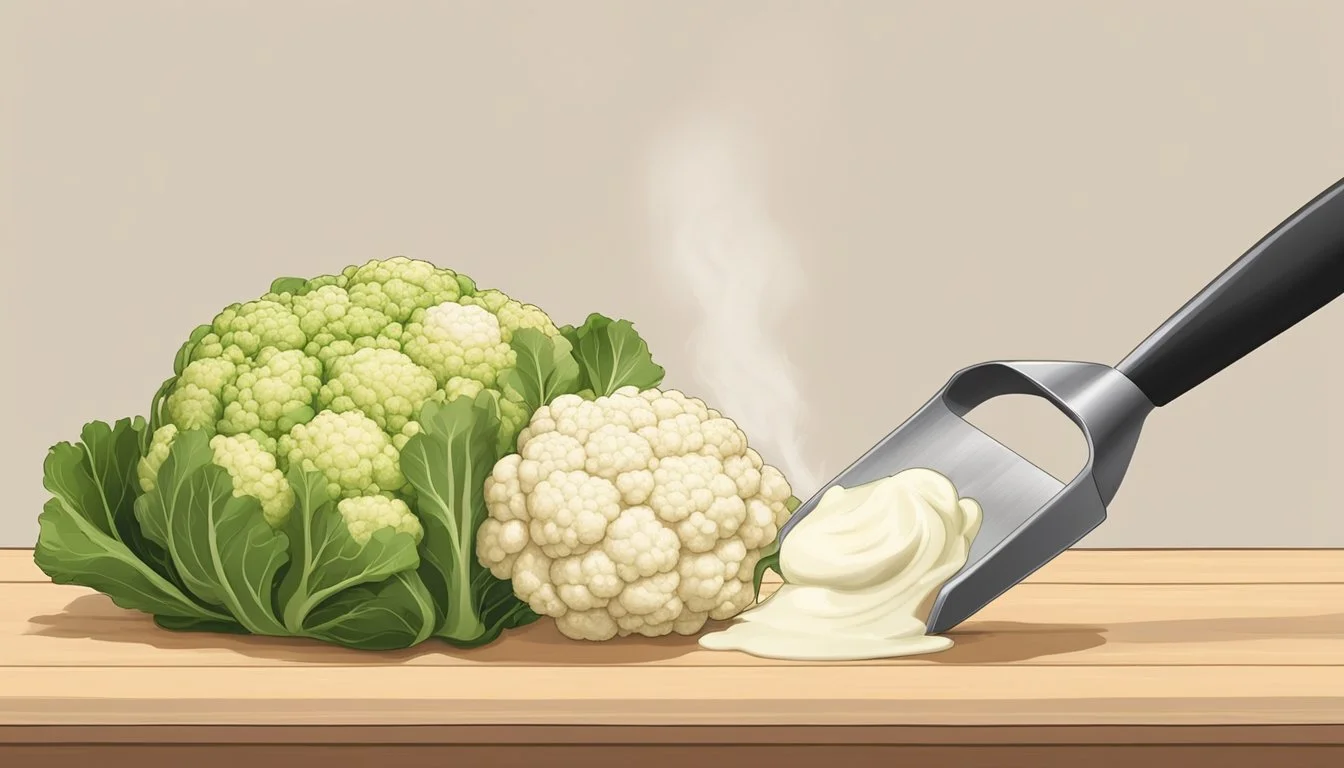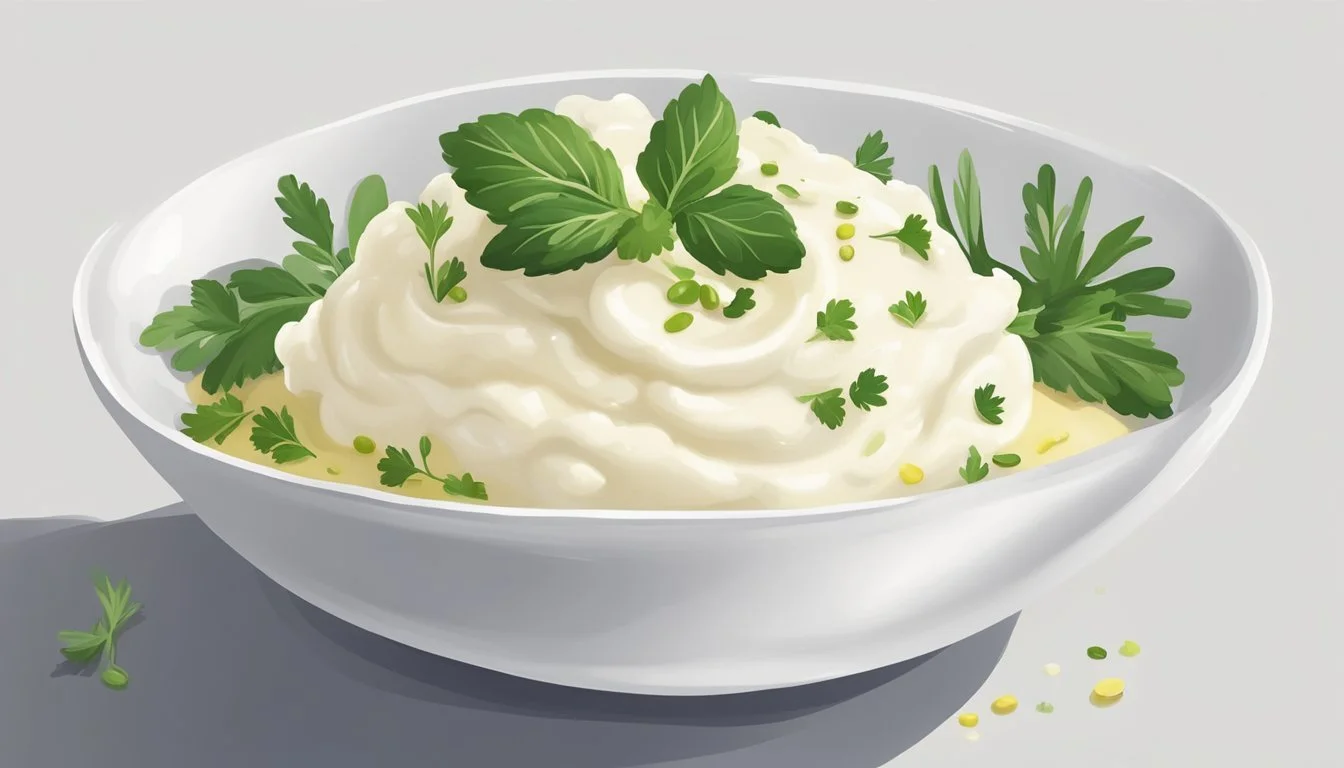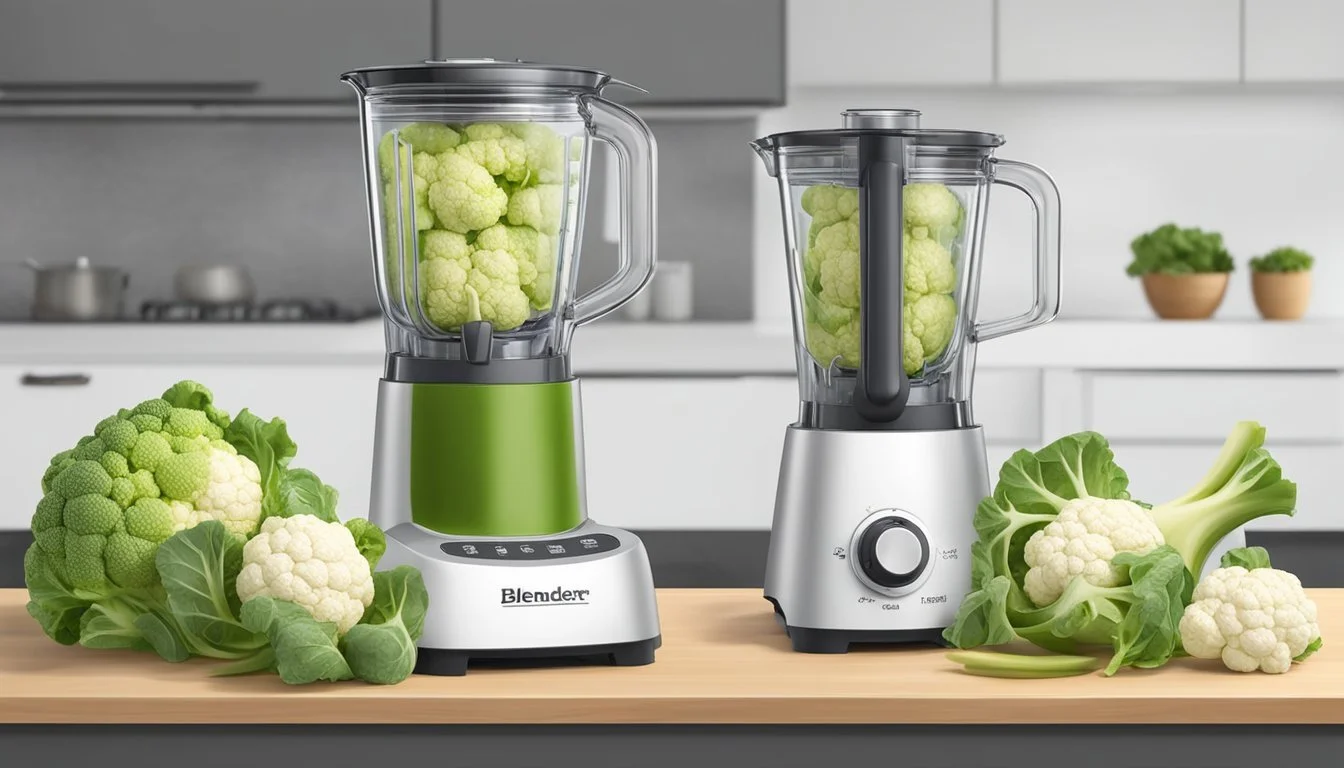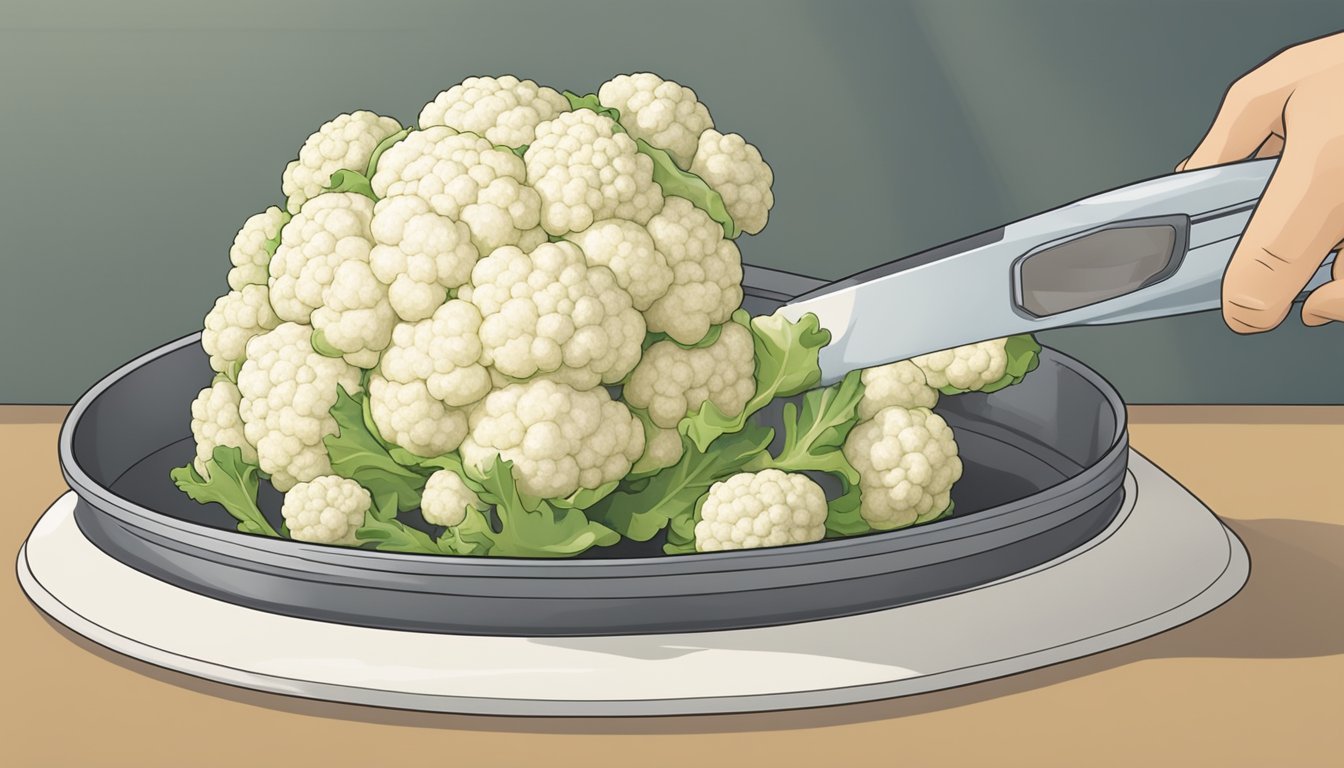Cauliflower Core Purée
A Silky, Low-Carb Side Dish Marvel
Cauliflower purée is rapidly becoming a cherished side dish for those looking to savor the creamy texture and rich flavor of a mashed potato alternative without the high carbohydrate content. This versatile dish can take on various flavors and seasonings, making it an excellent complement to numerous meals, ranging from elegant holiday dinners to weeknight family meals. Rich in nutrients and low in carbs, cauliflower purée offers a healthy substitute that doesn't sacrifice taste or texture, catering to a broad audience, including those on keto, paleo, and gluten-free diets.
The process of creating the perfect cauliflower purée involves cooking the cauliflower until it reaches a tender consistency, and then blending it with ingredients such as butter, cream, or stock to achieve a smooth and silky finish. Seasonings are then added to enhance the vegetable's natural mild flavor, allowing for customization according to individual preferences or dietary requirements. The result is a sumptuous and velvety purée that stands as a testament to the cauliflower's adaptability and the creative potential of this humble vegetable.
Cauliflower has risen in the ranks of culinary favorites due to its low carb profile and its impressive ability to mimic familiar comfort foods. As a cruciferous vegetable, it is not only low in calories but also packed with essential vitamins such as C, K, and B6, and contains fibers that aid in digestion. When transformed into a purée, these nutritional benefits are preserved, lending a nourishing aspect to the dish while providing a guilt-free indulgence for those looking to maintain a balanced diet.
Understanding Cauliflower Core Purée
Cauliflower Core Purée is a testament to the versatility of the cauliflower. As a nutritious vegetable, cauliflower is famed not only for its low carbohydrate content but also for being a substantial source of dietary fiber, vitamins, and minerals. When transformed into a purée, it serves as a sumptuous low-carb alternative to traditional side dishes like mashed potatoes, earning its place on the modern dinner table for both health-conscious eaters and culinary enthusiasts alike.
Here's what makes cauliflower purée exceptional:
Low-carb: The purée is low in carbohydrates, making it suitable for low-carb diets.
Nutrient-rich: Cauliflower provides a bounty of nutrients, including vitamin C, vitamin K, and various B vitamins.
Fiber: It's high in fiber, which is beneficial for digestive health.
The process of creating a silky cauliflower purée typically involves cooking the cauliflower until tender, then blending it with ingredients that can range from butter and cream to olive oil and vegetable broth, depending on dietary preferences. The end result is a creamy, velvety purée that carries with it both a neutral flavor profile and a comforting, familiar texture.
A side dish in its own right, cauliflower purée complements a variety of meals, from seared meats to roasted vegetables. Not only does it enhance the flavor experience, but it also increases the nutritional value of the meal without the added load of carbohydrates found in starchy alternatives.
The elegance of cauliflower purée lies in its simplicity and adaptability, allowing it to be infused with various herbs and spices to suit any palate. Whether used in formal dining or casual meals, it remains a steadfast option for a satiating and healthful addition to any plate.
Nutritional Profile
Cauliflower purée offers a rich nutritional profile suitable for those seeking a low-carb alternative to traditional side dishes. It's a favorable option for those monitoring their calorie intake, and it provides essential nutrients beneficial to overall health.
Comparing Cauliflower to Potatoes
Cauliflower is often used as a low-carb substitute for potatoes in a purée. Below is a comparison of their nutritional values per 100g serving:
Nutrient Cauliflower Potatoes Calories 25 kcal 77 kcal Fat 0.1 g 0.1 g Potassium 299 mg 421 mg Vitamin C 48.2 mg 19.7 mg Calcium 22 mg 12 mg Iron 0.4 mg 0.8 mg
Cauliflower showcases significantly lower calories and a higher vitamin C content, making it an attractive option for individuals on a low-carb diet.
Benefits of Low-Carb Sides
A low-carb side dish like cauliflower purée supports weight management due to its lower calorie content. The high vitamin C content contributes to immune defense and skin health, while its calcium and iron are important for maintaining healthy bones and blood cells. Reduced carbohydrate intake can also aid in stabilizing blood sugar levels, making it a strategic choice for those with diabetes or insulin resistance.
Core Ingredients
Creating a sumptuous Cauliflower Purée hinges on the quality of the core ingredients and the harmonious blend of spices and optional add-ins. This section outlines the essentials for a flavorful and low-carb side dish.
Selecting Quality Cauliflower
The foundation of a creamy purée begins with high-quality cauliflower. One should look for a cauliflower that is firm to the touch with a uniform white color, free of blemishes or brown spots. The cauliflower should feel heavy for its size, indicating good moisture content which is crucial for a velvety texture.
Essential Spices and Herbs
To elevate the taste of Cauliflower Purée:
Salt: A pinch of kosher salt enhances the natural flavor of the cauliflower.
Black Pepper: Freshly ground black pepper adds a slight heat and pungency.
Garlic: A few cloves of garlic offer a subtle, aromatic depth to the dish.
Thyme: A herb like thyme complements the cauliflower with its earthy and slightly floral notes.
Optional Add-ins for Enhanced Flavor
For added richness and complexity, consider incorporating the following:
Butter: A few tablespoons of unsalted butter for its creamy and silky finish.
Nutmeg: A dash of nutmeg can introduce a warm, nutty flavor.
Cream or Stock: A splash of cream or a ladle of vegetable or chicken stock can be used to adjust the consistency and add another layer of taste.
These carefully chosen ingredients, when used properly, will result in a side dish that is not only rich in taste and pleasingly smooth but also aligns well with a low-carbohydrate dietary pattern.
Step-by-Step Cooking Guide
Creating a smooth and creamy cauliflower purée requires a few simple but crucial steps. This guide will walk you through each phase, from initial preparation to final adjustments, ensuring a perfect consistency and flavor of your low-carb side dish.
Preparing the Cauliflower
Before anything else, the cauliflower needs to be prepped for cooking. The goal is to break the vegetable down into uniform pieces for even steaming.
Wash the cauliflower thoroughly under running water to remove any dirt or impurities.
Detach the florets from the core and slice them into similar-sized pieces to promote uniform cooking.
Steam the cauliflower florets until they are very soft and fully cooked, which generally takes about 10-20 minutes depending on the size of the pieces.
The Puréeing Process
Once the cauliflower is steamed and tender, it's time to transform it into a silky purée.
Transfer the cauliflower to a blender or food processor for a smoother texture, or use an immersion blender if you prefer to work directly in the pot.
Purée the cauliflower until it begins to smooth out, pausing to scrape down the sides as necessary to ensure even blending.
Adjusting the Consistency
Achieving the perfect consistency is key to a delightful purée. You might need to add liquid to attain a creamier texture.
If the purée is too thick, add a bit of the cooking liquid, cream, or stock, blending after each addition until you reach the desired consistency.
For a creamier texture, some recipes suggest incorporating fats like butter or coconut cream in small quantities during the blending process.
Perfecting Seasoning and Texture
The final touches are all about personal preference, enhancing the purée to bring out its best flavor and texture.
Season the purée with salt and freshly ground pepper to taste, and consider other spices or fresh herbs like thyme for added flavor complexity.
To further refine the texture, you might blend in additional ingredients like sour cream for added richness, ensuring they are fully integrated into the purée.
By meticulously following these steps, cooks can produce a cauliflower purée that boasts a luxuriously creamy texture and a taste that complements an array of main courses.
Accompaniments and Pairings
Cauliflower purée gleams as a versatile low-carb side dish that seamlessly adapts to a variety of main courses and meal contexts. It carries a rich, creamy texture that provides a lush counterpart to proteins and can readily anchor vegan or vegetarian meals, as well as stand out in holiday feasts.
Matching with Proteins
Cauliflower purée offers a splendid juxtaposition to steak. Its smooth texture balances the steak's richness, while the mild flavor of cauliflower does not overpower the natural taste of the meat. Another exemplary pairing is with roast chicken, where the purée can be seasoned to complement the poultry's seasoning, sharing the plate with a dish that is both hearty and nutritionally balanced.
Vegan and Vegetarian Combinations
For a vegan or vegetarian option, one might mix the purée with sautéed green beans adorned with hints of garlic and lemon zest, or it can nestle next to stuffed bell peppers. The dish’s creamy consistency ensures that it holds its own when served with plant-based proteins, making it a firm foundation for a satisfying vegan meal.
Incorporating into a Holiday Meal
Within a holiday meal setting, cauliflower purée becomes an elegant low-carb alternative to traditional mashed potatoes. It harmonizes well with other classic sides, such as cranberry sauce or roasted Brussels sprouts. The purée's luxurious feel adds a special touch to the festive table, demonstrating that one need not sacrifice taste for health-conscious choices.
Recipes Variations
Cauliflower purée is a versatile side dish that can be tailored to meet various dietary needs and flavor preferences. These recipe variations offer dairy-free and vegan options, incorporate the rich flavor of roasted garlic, and demonstrate how to infuse the purée with aromatic herbs.
Dairy-Free and Vegan Options
For those who avoid dairy, cauliflower purée can easily be adapted. Replacing butter with olive oil or a plant-based butter and using almond, soy, or oat milk instead of cream achieves a dairy-free purée. To mimic the depth that parmesan cheese offers, one can add nutritional yeast for a nutty and cheesy flavor.
Ingredients:
Olive oil or plant-based butter
Nutritional yeast
Dairy-free milk alternative (almond, soy, oat)
Cauliflower Purée with Roasted Garlic
Roasted garlic adds a caramelized depth to the cauliflower purée. To prepare, roast garlic cloves with a drizzle of olive oil until they are golden and soft. Mix these into the purée for a dish that carries a gentle, smoky sweetness.
Ingredients for Roasting Garlic:
Garlic cloves
Olive oil
Herb-Infused Cauliflower Purée
Herbs can elevate the basic cauliflower purée to a fragrant side dish. Adding fresh or dried thyme, rosemary, or sage during the cooking process allows their flavors to infuse the purée, creating a complex, herbaceous profile.
Suggested Herbs:
Thyme
Rosemary
Sage
To incorporate herbs:
Add chosen herbs to the cauliflower as it cooks.
Remove whole sprigs after cooking, before puréeing.
Both fresh and dried herbs work, but fresh will provide a more potent aroma and flavor.
Storage and Reheating Tips
When it comes to cauliflower purée, maintaining its creamy texture and fresh flavor is essential. Proper storage and reheating methods ensure that this low-carb side dish remains as delightful as when it was first prepared.
Preserving Freshness
To keep leftover cauliflower purée fresh, one should transfer it to an airtight container promptly after cooling. It can be refrigerated for up to 3-4 days. One must ensure that the purée is sealed well to prevent it from absorbing any odors from the refrigerator.
Reheating Without Compromising Flavor
For optimal taste, reheating should be done carefully. The best method is to reheat the purée over low heat on the stovetop, stirring constantly to maintain a smooth consistency. If using a microwave, one should reheat the purée in short intervals, stirring in between to evenly distribute heat without drying it out.
Freezing and Thawing Procedures
Cauliflower purée can be frozen for later use. To freeze, let the purée cool completely, then portion it into freezer-safe bags or containers. It can be stored in the freezer for up to one month. When ready to use, one should thaw it overnight in the refrigerator or using the defrost setting on a microwave. Simple preparation before freezing, such as dividing it into serving-sized portions, can make the thawing process more convenient.
Potential Challenges and Solutions
Creating a perfect cauliflower purée involves overcoming common culinary hurdles. A careful approach can ensure the intended flavor and texture are achieved.
Dealing with Bitterness
Cauliflower can sometimes impart a bitter taste, which is undesirable in a smooth purée. To mitigate bitterness, one can blanch the cauliflower in salted water before puréeing. Blanching removes some of the compounds that cause bitterness and results in a milder flavor. Alternatively, adding a pinch of sugar during the cooking process can also counteract any lingering bitterness.
Ensuring Creamy, Non-Grainy Texture
The key to a creamy texture without graininess lies in the cooking method and blending technique. Cooking the cauliflower until it is very soft is crucial; it should easily break apart when poked with a fork. For blending, using a high-powered blender or food processor will yield the silkiest consistency. Adding an adequate amount of liquid, such as cooking stock or cream, facilitates a smoother blend. For extra creaminess, some recipes suggest incorporating butter or cream cheese after blending.
To Avoid Graininess: Do: Avoid: Proper Cooking Time Cook until very soft Undercooking Blending Technique & Tool Use a high-powered blender Insufficient blending Creaminess Enhancers Add butter/cream post-blend Too little liquid addition
Adjusting the Recipe for Large Quantities
When scaling up cauliflower purée for more servings, maintaining consistency becomes a challenge. Cook the cauliflower in batches to ensure even softness. One can blend the cauliflower in batches to ensure the blender or food processor isn't overloaded, which can compromise the purée's texture. Additionally, stirring together all batches at the end will help achieve uniform creaminess and flavor.
In summary:
For bitterness, blanch or add a pinch of sugar.
Achieve a creamy texture by cooking until soft and blending properly.
For large quantities, cook and blend in batches and combine at the end.
Conclusion
Cauliflower purée stands out as a nutritious and tasty side dish that easily accompanies a variety of meals. Its velvety texture is not only appealing but also a testament to its simple preparation.
The dish provides a low-carb alternative to traditional mashed potatoes, delivering essential nutrients without excess starch. Cauliflower is an excellent source of vitamins C and K, and also supplies fiber and antioxidants, which are vital for maintaining good health.
A typical serving of cauliflower purée contains:
Calories: Approximately 60-80
Carbohydrates: 5-10g
Fiber: 2-3g
Protein: 2-3g
Fat: Varies with addition of butter or cream
The beauty of this dish lies in its adaptability; it accommodates a wealth of flavor additions, from garlic and onions to fresh herbs and spices. It also lends itself to various dietary preferences by allowing for substitutions like vegetable broth for a vegan variant or cream for a richer consistency.
Preparing cauliflower purée requires minimal effort. One steams or simmers the florets until tender, then blends them to achieve the desired smoothness, making this dish as straightforward as it is satisfying.
In essence, cauliflower purée is a wholesome, versatile option that confirms healthy eating does not compromise on flavor. It is an excellent choice for anyone seeking a delicious and nutritious alternative to heavier side dishes.

